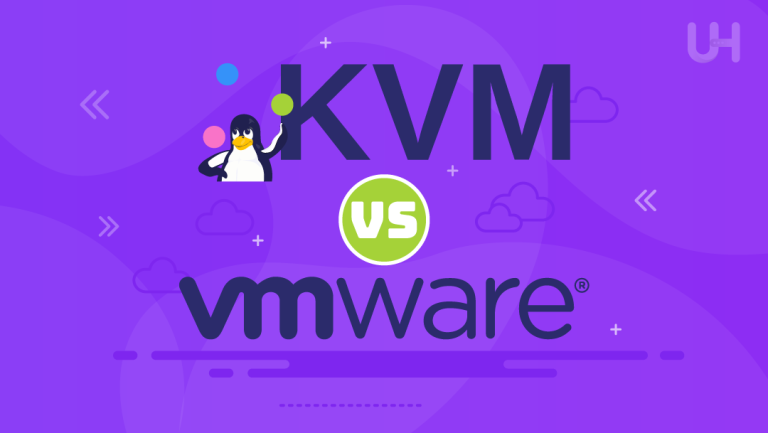Virtualization of IT resources brings a smarter, more agile, and scalable management approach to information technology. While there are different forms of virtualization, server virtualization KVM is indisputably the most flexible and sophisticated one.
To optimize IT infrastructure KVMs need to be adaptable and perform scalability. In this guide, we explain what a virtual machine is and whether KVM meets your virtualization needs.
What is KVM?
The full form of KVM is Kernel based Virtual Machine. KVM is a technology unit host machine which is integrated as part of Linux kernel. In layman terms, one of the terminal frameworks of a machine serves as an hypervisor, capable of spinning up a large number of virtual machines (VMs) at the same time. In essence, KVM virtualization does concentrates on standards server virtualization KVMs. It neglects however the control within the hosted VMs and the logical structuring of the controlling domain, server architecture and the various operations. Managing KVM nodes is painless because it only involves the creation, control, and execution of VMs.
Like with any KVM virtualization, the physical features of the host computer such as the CPU, memory, storage, and networking are hidden. The primary purpose of these components is to provide them to subordinate linux virtual machines (VMs). This level of abstraction cuts the necessity of higher BMS-level servers, thereby lower the inflection point at which KVM resource pool can be utilized.
How does KVM Work at the Kernel Level?
KVM utilizes Intel VT-x and AMD-V extensions to optimize the virtualized access to CPU resources at the kernel level. The KVM hypervisor can directly execute modified guest operating systems on the host’s hardware. As a result, there is no need for binary translation and emulation.
To use KVM, a VM must be created first. It is created when the hypervisor builds a “VUOS” or simple virtualized user operating system in the kernel. This VOS creates an intermediary for a guest operating system where a physical one in a computer is hosted, to enable control of privileged instructions and service requests.
With the advent of modern processors, KVM makes use of its hardware capabilities to provide assisted virtualization, achieving better performance and lower overhead than software-based KVM solutions. KVM’s integration of the Linux kernel’s features with the hardware virtualization extensions provides superior and efficient virtualization services for a multitude of workloads and use cases.
Ready to Experience the Power of KVM?
With Ultahost’s KVM server, create a hypervisor that performs exceptionally well. There has never been a better time to elevate your journey with virtualization technologies as we offer unmatched features, flexibility, and security with KVM technology.
Key Features of KVM
Hardware Virtualization Support
KVM executes CPU resource virtualization using its hardware specifically for peripherals in an efficient manner. The use of supported peripherals helps achieve ‘no overhead’ and ‘full resource’ assisted virtualization workload, thus maximizing performance.
Run Multiple VMs on a Single Physical Host
The KVM feature that essentially stands out is parallel running of different VMs on one physical server. The provided resources to each VM such as CPU, RAM and Disk Space ensure strong ventilation in between VMs, and hence guarantees resource independence. Maximization of cost-effective physical servers and reduction of operational expenses are valuable to businesses.
Live migration Capabilities
KVM allows running VMs to be migrated between physical hosts while maintaining service availability through the concept of migration called live migration. This feature helps in service availability, workload balancing, system resource optimization, and proactive maintenance of hardware without disrupting services. With this feature of KVM, infrastructure agility and resiliency for VMs are greatly enhanced by improving their mobility across infrastructures.
Management Tools and Interfaces
KVM permits various management tools and interfaces for the building, configuring and managing virtualized environments. One of these tools and interfaces is vertically integrated and goes by the name of virtue.
- Virt-manager: Acts as the GUI based VM management tool and includes VM creation, configuration, monitoring and even migration which is performed while the system is operational.
- virsh: A command line utility for controlling VMs using KVM Hypervisor. In the hands of a KVM administrator, Virsh can perform scripts for automation, manage virtual networks, and control access to VM consoles.
Benefits of KVM Virtualization
Performance
KVM stands out among other virtualization applications owing to its marvelous performance. It makes efficient use of hardware resources as well as having support for virtualization on a physical processor for a machine. The adoption of features for processing through virtualization along with effective resource allocation means minimal computational overhead for performance settings in a virtualized environment while maximum productivity is achieved. Due to its unmatched performance, KVM is able to handle HPC tasks, crucial business operations, and other demanding resource activities.
Cost-effectiveness
KVM is an open-source software virtualization system that is part of the Linux kernel, making it freely accessible to users worldwide. Since this system is a part of the Linux kernel, it is always advancing because of the support and development provided by the Linux community which means improvements, updates, and security enhancements are provided consistently. Also, businesses gain additional functionality and control while saving money due to the lack of licensing costs and vendor lock-in in comparison to proprietary virtualization solutions because of the open-source nature of KVM.
Compatibility
The software is designed to operate with various systems, including Linux, Windows, and other Unix derivatives. This provides great versatility and functionality. KVM also supports Windows servers with Linux installed as a guest OS. Thus, the organization is able to virtually deploy diverse workloads and applications without difficulty. KVM is also functional across different platforms. This means that companies can take advantage of their existing frameworks and investments without being bound to specific hardware.
Flexibility
This provides flexibility with the creation and management of the virtual environment. Furthermore, it provides administrative control for configuration, resource allocation, and performance tuning. Through KVM, an administrator can individually configure a virtual machine’s CPU, memory, storage, networking, and other parameters to match specific workloads. In addition, KVM provides several management and control interfaces, like virt-manager and virsh, for integrated automated and unattended management and monitoring of virtualized environments. This capability helps admins to manage, alter, and scale their virtualization infrastructure efficiently, optimizing management cost and resource expenditure.
Comparisons with Other Virtualization Technologies

KVM vs. VMware
Management Software: VMware has vSphere and additional products via which virtualized systems can easily be managed from a single location. KVM has management tools such as virt-manager and virsh, but, as previously stated, VMware has more user-friendly interfaces which makes their tools easier to operate for most people who aren’t experts.
Cost: KVM is free of charge, meaning services are unpaid and there are no costs associated with KVM. This is a stark contrast to VMware whose offerings have licensing fees. Hence, organizations are enabled to deploy virtualization at scale without worrying about going over budget with KVM.
Management Tools: Unlike VMware which has type 1 hypervisors for ESXi and type 2 hypervisors for workstations and fusion, KVM has integrated advantages of resource efficiency and performance with linux host systems. Thus, KVM is a type 1 hypervisor.
Ecosystem: Since KVM is maintained by the community, support is available from various linux system solutions. In contrast, VMware bolsters services to different enterprises which aids ease of use for them globally.
KVM vs. Xen
Architecture: KVM and Xen are both classified as type-1 hypervisors that provide access to hardware resources. The difference is that KVM is part of the Linux kernel while Xen is a standalone hypervisor. Such difference on architecture may affect performance and the number of operating systems a particular hyper visor can support.
Management: As part of the Linux ecosystem, KVM’s management options such as virt-manager and virsh are fully integrated. Xen has XenCenter that fills the same need, but can be more difficult to use for those unfamiliar with the depths of Xen.
Community and Support: Since KVM is integrated with Linux, he has access to good documentation, forums, and guides, which makes community support readily available. Xen does have an active community, but he is outnumbered by KVM’s larger users.
KVM vs. Hyper-V
Platform Support: The primary system for this is KVM Linux and for this Hyper-V Windows Server. Client operating systems Windows can also use Hyper-V, which broadens the scope of deployment to users of Windows.
Licenses: KVM does not require a license while Hyper-V has more restrictive Windows 10 Server Edition licenses like VPS, which requires payment for commercial use, thus increasing the costs of operating system virtualization.
Integration: Hyper-V is more integrated with Microsoft’s own systems like Active Directory and System Center since they are administered together as a single entity within Windows environment unlike KVM which can utilize other third party tools and services due to its open-source nature, providing greater flexibility.
Challenges and Considerations
Hardware Requirements for Optimal KVM Performance
- The performance of KVM virtual machines are reliant on the system’s supporting hardware infrastructure which includes the devices’ CPU, memory, storage, and networking components.
- In terms of providing optimal effectiveness, an organization must ensure their hardware can provide support for the virtualization extensions, memory, CPU, as well as sufficient storage speed that is adequate for the VM’s data.
- Additions of new server architecture further improve KVM’s performance, scalability and flexibility while ease of customization for components increases with upgraded server hardware.
- With the adoption of hypervisors, new types of attacks have emerged such as: VM escape, Hypervisor attacks, and guest-guest security vulnerabilities.
- With the opportunity for new technological improvements, there comes a balanced and corresponding security risk that must be mitigated using diverse security frameworks. These can include network zoning, data silos, data masking, and system evaluation on a tight schedule.
- The safeguard of virtualized applications can be improved more by the use of SELinux, which integrates into KVM hypervisors, as well as virtualization-aware firewalls that protect virtual infrastructures.
Strategies for Addressing These Challenges
- Security and system integrity: Best practices routine patch updates, silos on sensitive information, data masking, and security sections aid in mitigating security concerns.
- Powerful performance monitoring Tools: Ansible, Puppet, and Chef are tools that improve overall service delivery by automating redundant tasks, controlling and configuring services on KVM platforms, and uniformity fostering improvement while provisioning.
- Performance improvement activities: Regularly defining and tuning system parameters like KVM resource optimization, allocation, and hardware component upgrading will improve overall system and scalable advanced calculation performance.
- Skills development: To overcome these challenges effectively, the personnel IT departments require intensive skill advancement training programs with accurate and suitable target instructions, plans, and sessions.
Conclusion
KVM acts as the core of Linux and permits Server and desktop virtualization. It helps us in optimizing the use of computer resources. However, other requirements such as some hardware and security features may be difficult. It is mostly preferred because of its versatility and ability to integrate with many systems. This is revolutionizing the business world for the better.
Boost your IT infrastructure with Ultahost’s VM Hosting services. Whether you are an industry veteran or an exciting newcomer, Ultahost offers simple services that are tailored to the strength and efficiency of KVM.
FAQ
Does KVM support live migration?
Yes, it supports live migration, allowing you to move running virtual machines between physical hosts without interrupting service availability. This feature is useful for workload balancing, hardware maintenance, and disaster recovery purposes.
Is KVM secure?
It is designed with security in mind and benefits from the security features of the Linux kernel. However, like any virtualization technology, it’s essential to implement proper security measures, such as network segmentation, access controls, and regular software updates, to mitigate potential risks.
Is KVM suitable for businesses of all sizes?
Yes, it is suitable for businesses of all sizes. It’s used by small businesses, enterprises, and cloud service providers alike due to its scalability and cost-effectiveness.
What are the benefits of using KVM?
It offers excellent performance, scalability, and flexibility. It’s cost-effective, as it’s open-source and integrated into the Linux kernel. KVM supports a wide range of operating systems and hardware platforms, making it versatile for different use cases.











